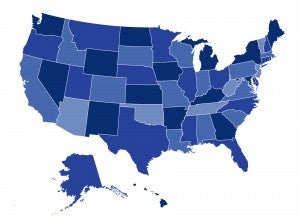
By Jack Hoadley and Kevin Lucia
The federal No Surprises Act protects consumers from surprise bills from out-of-network providers in emergency and certain non-emergency situations. The law also establishes a method to determine how much insurers will pay those providers. Establishing payment is critical to ensuring that providers are satisfied and comply with the law. But an upward trend in payments for out-of-network care could push rates higher for in-network contracts. These costs, in turn, could raise premium costs for employers and consumers.
The federal law’s method for determining payments will be the primary mechanism, but the law calls for state mechanisms to be used where they exist. All 18 states that have already enacted comprehensive protections have such mechanisms, as do several states with partial protections. State payment mechanisms will apply for state-regulated insurance, but not to federally regulated self-funded plans, which are typically offered by large employers.
In their latest To the Point post for the Commonwealth Fund, CHIR experts examine the potential implications of these various state mechanisms on health costs and premium trends. You can read the full post here.

